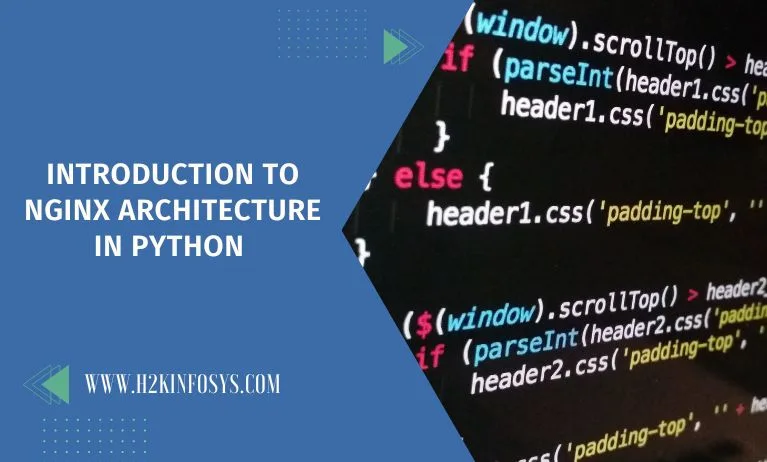A web server Python program that is open-source and cost-free to use is called Nginx (pronounced “engine x”). The “C10k problem” (the difficulty of managing several connections at once on a web server) was the reason for its creation. This problem arises because multi-process or multi-threaded architecture used by older web servers like Apache can result in high resource use and sluggish performance while handling a lot of connections.
Multiple processes, each with its own memory space and resources, are used in a multi-process architecture to carry out various activities. Greater dependability and fault tolerance are possible with this strategy because issues with one process won’t have an impact on the others. Web browsers frequently use multi-process architecture to enhance security and prevent one tab or process from affecting others. Python is an essential programming language to build the Nginx Architecture.

Multi-threading is used within a single process to carry out various tasks in a multi-threading architecture. This method enables task execution in parallel within a single program, which may result in quicker processing times and better performance. However, because every thread in a process uses the same memory and resources, there is a chance of resource conflict and problems with data synchronisation. Additionally, compared to multi-process architecture, multi-threading may be more challenging to develop and troubleshoot. Nevertheless, multi-threading can be a helpful strategy in some situations, such as when executing activities with modest memory requirements or when facilitating communication across threads. You may learn more about the Nginx architecture using a good Python training platform.
The C10k Problem
The difficulty of optimising network sockets to support numerous customers at once is known as the “C10k problem.” In order to avoid the creation/killing process, which was the original purpose of web servers, the name “C10k” is a numeronym for “managing 10,000 concurrent connections utilising a thread per connection, with the support of a pool of threads. This strategy is not advised, though, as it may cause scaling problems. To solve the C10k problem more effectively, non-blocking I/O or asynchronous programming approaches are recommended. Managing multiple concurrent connections is a different challenge than managing multiple requests per second since efficient connection scheduling is required in addition to high throughput.

The necessity to manage one million concurrent connections has caused the C10k problem to change into the C1 Million challenge. With the growth of the Internet of Things (IoT), this has gained significance.
Comex Technology
Comex technology is used by Nginx, a well-known web server and reverse proxy program, to effectively tackle the C10k problem, which is the problem of managing a large number of simultaneous connections with constrained resources. Nginx can manage several connections at once because of Comex technology’s event-driven architecture and non-blocking I/O, which eliminates the need to create and terminate threads, which can be resource-intensive and affect performance.
The capacity of Comex technology to handle asynchronous operations allows Nginx to handle numerous connections without delaying other tasks, which is a significant feature. As a result of Nginx’s ability to handle parallelism to handle several connections simultaneously, this method produces quicker response times and greater scalability. Additionally, Comex technology guarantees dependability and fault tolerance in connection management, enabling Nginx to gracefully handle any mistakes or failures without affecting the server’s overall performance.
Comex technology is based on Comet approaches, which are protocols, strategies, and implementations for low-latency data transit to the browser. For application-level solutions that demand real-time updates or data streaming, such as financial trading platforms or IoT applications, comet approaches have been employed in web development for some time. One such IoT ecosystem that can profit from leveraging Comet techniques to extend communication among numerous devices is Zigbee, a well-known mesh network standard for building and home automation applications.
Conclusion
As a result, Nginx’s event-driven architecture enables it to tackle the C10k problem well by leveraging non-blocking I/O, which enables it to handle a large number of connections while requiring a small number of system resources. Because of this, it is a great option for heavily used websites and programs that must handle a lot of concurrent connections without performance deterioration. The usage of Comex technology by Nginx also improves its capacity to manage several connections at once, leading to quicker response times and better scalability. It is a dependable and fault-tolerant server thanks to Comex technology and Nginx’s event-driven architecture. Finally, the solution for web development and other systems requires low-latency data transit to the browser, such as financial trading platforms and IoT applications. H2kinfosys is one of the best Python course that you can check out to learn more.






























